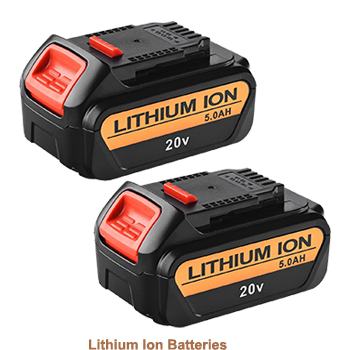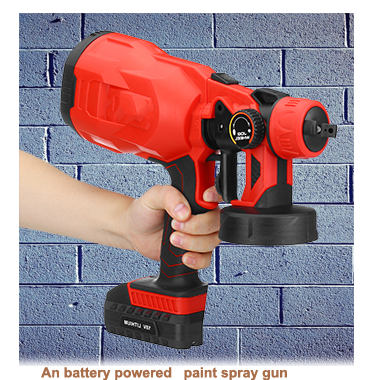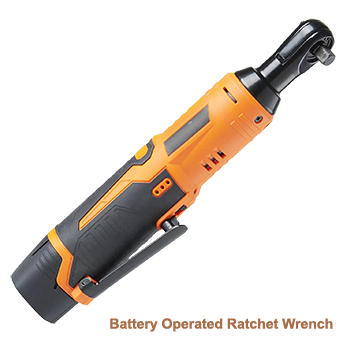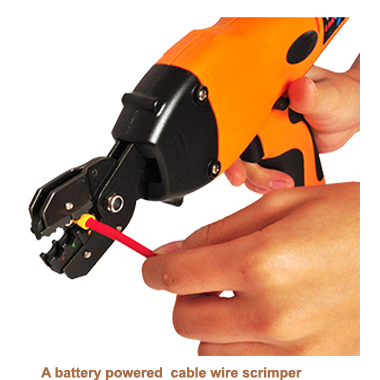 The drive for increased efficiency, mobility, and adaptability In today’s car maintenance workshops, has become increasingly prominent.
The drive for increased efficiency, mobility, and adaptability In today’s car maintenance workshops, has become increasingly prominent.
That is one of the reasons why, in the past few decades, that battery-operated power tools have become increasingly popular, in many cases replacing or at least enhancing the use of traditional corded and pneumatic equipment.
 Maintenance shop owners increasingly rely on rechargeable lithium-ion technology to power a range of tools. Just a few examples of where cordless technology come into its own are cordless impact wrenches, drills, ratchets, grinders, and polishers.
Maintenance shop owners increasingly rely on rechargeable lithium-ion technology to power a range of tools. Just a few examples of where cordless technology come into its own are cordless impact wrenches, drills, ratchets, grinders, and polishers.
 One of the key advantages could be mobility. Battery-powered tools provide the advantage of mobility, enabling you to work comfortably in different environments—be it in a busy garage or outside when the vehicle is unable to be moved indoors.
This flexibility especially provides advantages for classic car restorers or maintainers, who often have to work on stationary vehicles or in tight spaces where there is no access to live power.
One of the key advantages could be mobility. Battery-powered tools provide the advantage of mobility, enabling you to work comfortably in different environments—be it in a busy garage or outside when the vehicle is unable to be moved indoors.
This flexibility especially provides advantages for classic car restorers or maintainers, who often have to work on stationary vehicles or in tight spaces where there is no access to live power.
 Cordless tools have also been found to be much more effective in reducing setup time. The ability for a mechanic to operate effectively without the need to look for a nearby power source, unroll extension leads of connect to a compressor, saving a lot of valuable time.
Cordless tools have also been found to be much more effective in reducing setup time. The ability for a mechanic to operate effectively without the need to look for a nearby power source, unroll extension leads of connect to a compressor, saving a lot of valuable time.
By minimising the time dedicated to each task, this approach can significantly enhance overall productivity in the workshop,
Nowadays with the advent of rapid-change battery systems. depleted batteries can be swift exchanged, with a replacement installed in mere seconds making for greatly minimised downtime.
In workshops filled with equipment battery operated tools play a significant role in minimising various hazards, leading to a safer and more organised environment. Recent developments in lithium-ion batteries and brushless motors have greatly improved the power and reliability of cordless tools. High-torque impact wrenches are now capable of delivering performance on par with pneumatic systems, while drills and grinders often achieve equal or even greater efficiency compared to their corded counterparts. Today’s battery platforms come complete with smart monitoring features designed to extend battery life, maintain a consistent power output while preventing the risk of the battery overheating.
Today’s battery platforms come complete with smart monitoring features designed to extend battery life, maintain a consistent power output while preventing the risk of the battery overheating.
That means that a maintenance of restoration workshop that decide to invest in a specific platform can effectively use the same battery packs across a range of tools, saving a lot per unit cost.
 Battery tools generally produce less noise than pneumatic tools, which depend on compressors for operation. Reducing noise levels in workshops contributes to better working conditions for staff and enhances the customer experience in smaller service facilities, where loud sounds can be quite disruptive.
Any company or individual considering in investing in cordless, battery-operated power tools should know that there are some disadvantages, that should be carefully weighed up.
Battery tools generally produce less noise than pneumatic tools, which depend on compressors for operation. Reducing noise levels in workshops contributes to better working conditions for staff and enhances the customer experience in smaller service facilities, where loud sounds can be quite disruptive.
Any company or individual considering in investing in cordless, battery-operated power tools should know that there are some disadvantages, that should be carefully weighed up.
The first is that for jobs that demand considerable effort, such as grinding, cutting, or operating high-torque wrenches will quickly drain batteries.
While keeping charged spare batteries on hand is the obvious solution, it does require investing in multiple units as well as establishing careful charging schedules. It’s also a proven fact that every lithium-ion battery, no matter its quality, will gradually degrade.As time progresses, the owner will inevitably observe a significant reduction in runtime, necessitating its replacement.
 Unlike corded tools, which can endure for many years with proper maintenance, battery-operated tools involve ongoing costs that must be considered.
Modern cordless tools are capable of providing remarkable power, yet they are out of their league, when compared to industrial strength pneumatic systems. Heavy tasks such as removing severely rusted suspension bolts or engaging in heavy grinding can notably deplete batteries or exceed the tool’s rated torque. That’s why for heavy-duty applications; workshops frequently recognise the importance of having backup compressed air powered corded tools on hand.
Unlike corded tools, which can endure for many years with proper maintenance, battery-operated tools involve ongoing costs that must be considered.
Modern cordless tools are capable of providing remarkable power, yet they are out of their league, when compared to industrial strength pneumatic systems. Heavy tasks such as removing severely rusted suspension bolts or engaging in heavy grinding can notably deplete batteries or exceed the tool’s rated torque. That’s why for heavy-duty applications; workshops frequently recognise the importance of having backup compressed air powered corded tools on hand.
 Cordless systems must have access to reliable charging stations and a reliable and adequate electrical supply. Chargers are known to fail, or batteries are when accidentally left uncharged overnight, resulting in reduced productivity for part if not all of the next day. On the other hand, corded and pneumatic tools can be used whenever there is access to a power or air supply.
Workshops that rely heavily on cordless systems need to obviously consider the environmental impact of disposing of used batteries.
While many of the World’s leading manufacturers have implemented recycling programs, the overall sustainability of these efforts does not yet match the durability provided by corded or pneumatic systems.
A hybrid approach frequently proves to be the most effective solution for many car maintenance and restoration workshops. Battery-operated tools are ideal for mobility-dependent, medium-duty tasks such as tightening fasteners, drilling, or polishing panels. Pneumatic or corded systems are well-suited for heavy-duty tasks, such as continuous grinding, rust removal, or high-torque suspension work.
Cordless systems must have access to reliable charging stations and a reliable and adequate electrical supply. Chargers are known to fail, or batteries are when accidentally left uncharged overnight, resulting in reduced productivity for part if not all of the next day. On the other hand, corded and pneumatic tools can be used whenever there is access to a power or air supply.
Workshops that rely heavily on cordless systems need to obviously consider the environmental impact of disposing of used batteries.
While many of the World’s leading manufacturers have implemented recycling programs, the overall sustainability of these efforts does not yet match the durability provided by corded or pneumatic systems.
A hybrid approach frequently proves to be the most effective solution for many car maintenance and restoration workshops. Battery-operated tools are ideal for mobility-dependent, medium-duty tasks such as tightening fasteners, drilling, or polishing panels. Pneumatic or corded systems are well-suited for heavy-duty tasks, such as continuous grinding, rust removal, or high-torque suspension work.
 A comprehensive toolkit ensures that mechanics always have the right tool for every job, while also minimising the limitations of relying exclusively on one power source.
Battery-operated power tools have significantly changed car maintenance workshops, improving mobility, efficiency, and safety. They allow mechanics to work more efficiently, minimising risks and eliminating the constraints of cords or hoses.
A comprehensive toolkit ensures that mechanics always have the right tool for every job, while also minimising the limitations of relying exclusively on one power source.
Battery-operated power tools have significantly changed car maintenance workshops, improving mobility, efficiency, and safety. They allow mechanics to work more efficiently, minimising risks and eliminating the constraints of cords or hoses.
However, these benefits come with specific costs, affecting both financial and operational aspects. When considering the adoption of cordless systems, it's important for workshops to thoughtfully plan around factors such as limited runtime, battery degradation, and the substantial initial investment involved.
The decision should ultimately emphasise the integration of cordless technology within a comprehensive workshop strategy, rather than merely presenting it as a choice between “cordless and traditional.” When used effectively, battery-powered tools can improve the performance of corded and pneumatic systems, offering a balanced approach that takes advantage of the strengths of each type.